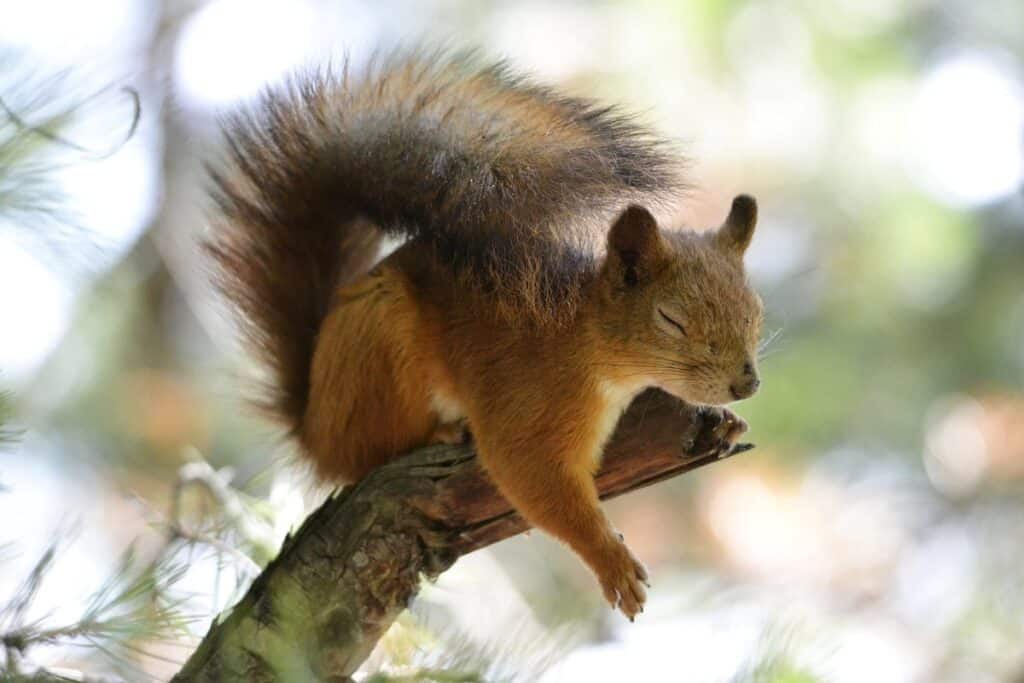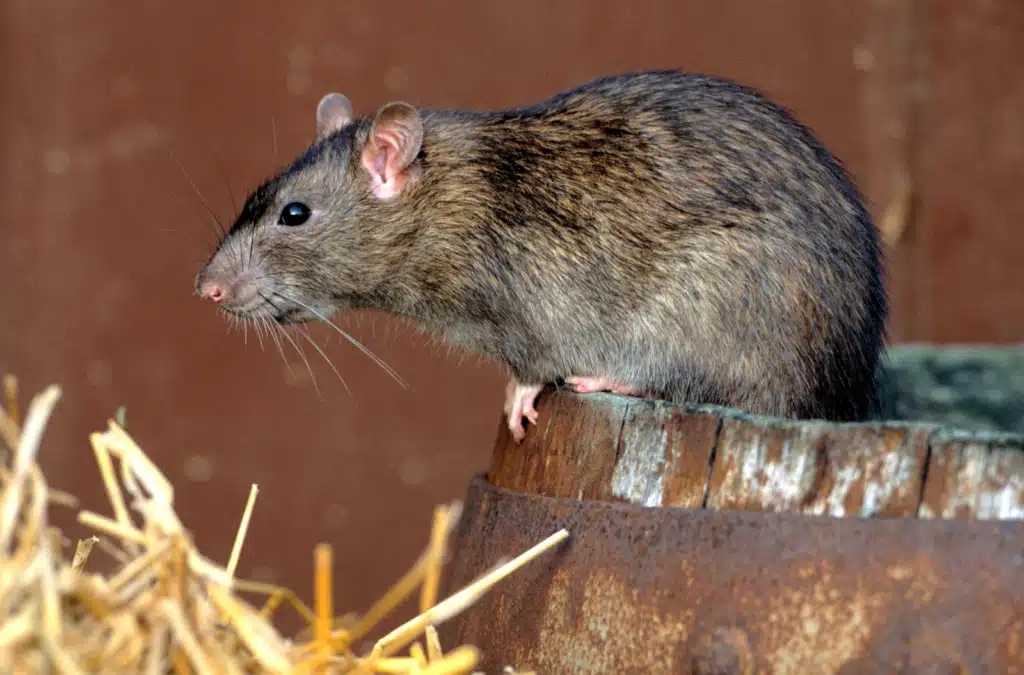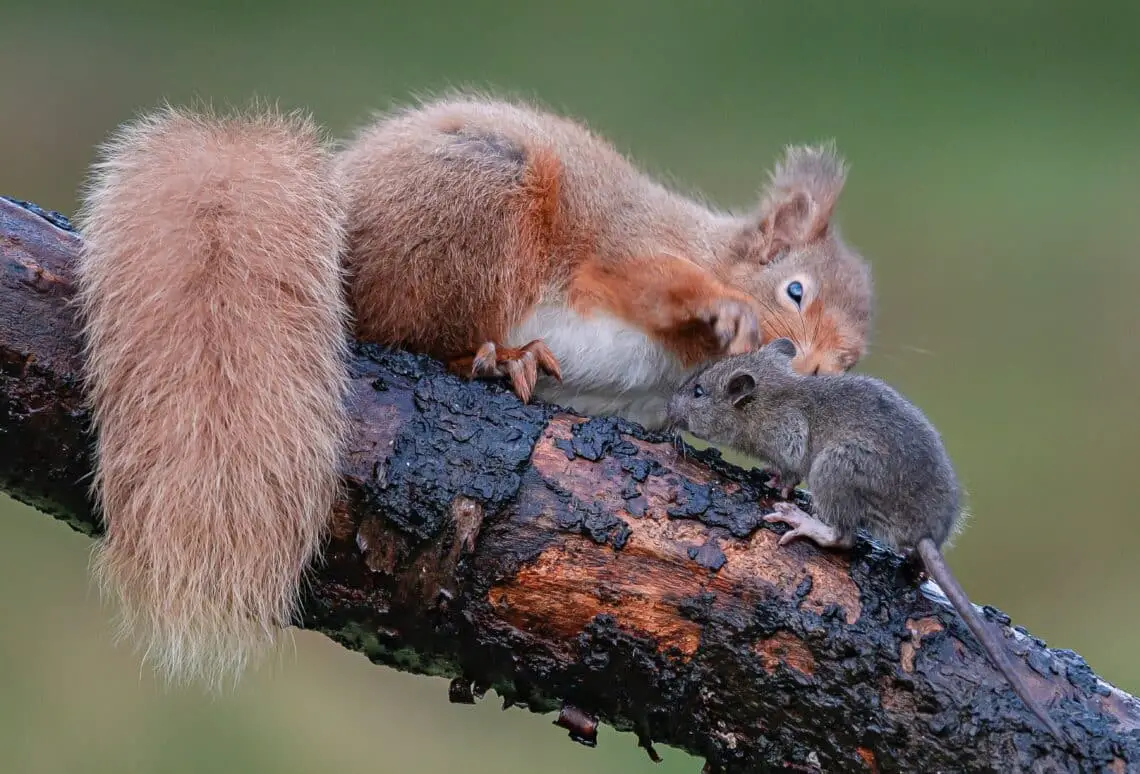Introduction
Are Squirrels And Rats Related: Squirrels are mammals because they breathe air and give birth to live babies rather than laying eggs. They are rodents and close cousins to other rodent species such as rats and mice. Squirrels and rats do share a common ancestry, as they both belong to the Rodentia order, a diverse group of mammals characterized by continuously growing incisor teeth.
Squirrels belong to the Sciuridae family, which encompasses a wide variety of species, including tree squirrels, ground squirrels, chipmunks, and prairie dogs. These rodents are well-known for their bushy tails, agile climbing abilities, and adaptations for an arboreal lifestyle. Squirrels and rats, while often mistaken for one another due to their similar body shapes and behavior, are distinct members of the rodent family.
Rats, on the other hand, are primarily categorized under the Muridae family, which includes various rat and mouse species. They are known for their adaptability to a wide range of environments and their tendency to burrow or live in close association with human habitation. These creatures share a common evolutionary ancestor and belong to the same order, Rodentia, which comprises over 2,000 species of rodents worldwide. However, the relationship between squirrels and rats is more nuanced.

Are squirrels a rodent or rat?
Squirrels are indeed rodents, but they are not rats. Both squirrels and rats belong to the same order within the animal kingdom, known as Rodentia, which is characterized by a set of common features, the most notable being continuously growing incisor teeth. This order encompasses a wide range of species, including squirrels, rats, mice, beavers, and many others.
Squirrels belong to the family Sciuridae, which includes various species of tree squirrels, ground squirrels, chipmunks, prairie dogs, and marmots. They are recognized for their distinctive features, such as bushy tails, strong hind legs adapted for climbing and leaping, and their preference for arboreal (tree-dwelling) lifestyles.
Rats, on the other hand, belong primarily to the family Muridae, which encompasses various species of rats and mice. Rats are known for their adaptability to a wide range of environments, their ability to burrow, and their propensity for living in close proximity to human settlements.
Both squirrels and rats are rodents, sharing common characteristics within the Rodentia order, but they belong to different families and have evolved to occupy different ecological niches and habitats. While they share the rodent label, they are distinct and separate groups within this diverse and extensive order.
Can rats and squirrels have offspring?
While squirrels and rats (or mice) are both rodents they are completely different animal species. So, no, a squirrel is not just a cute rat. Rats and squirrels cannot interbreed. The two species also have striking differences in behavior, lifestyle and communication.
Rats and squirrels cannot interbreed and produce offspring together. While both rats and squirrels belong to the same order of mammals called Rodentia, which includes a vast array of species with common characteristics like continuously growing incisor teeth, they are distinct and separate families within this order. Rats primarily belong to the family Muridae, while squirrels belong to the family Sciuridae.
Reproductive compatibility is a crucial factor in determining whether two animals can produce offspring together. Animals that can interbreed typically belong to the same species or very closely related species within the same genus. Rats and squirrels are not closely related in this manner; they are different genera and families, which makes interbreeding impossible.
The genetic differences between rats and squirrels are substantial, and their reproductive systems are adapted for their respective ecological niches and lifestyles. Interbreeding between animals typically occurs within species or among closely related species, where there is a high degree of genetic similarity and reproductive compatibility. Rats and squirrels, while both fascinating examples of rodents, are biologically distinct and have evolved separately over millions of years.
Are squirrels big rats?
Appearance: On average, squirrels are larger than rats. Squirrels have thick, bushy tails, whereas rat tails are thin and hairless. Nesting Habits: Both species can live indoors, but squirrels are more likely to build their nests in trees.
Squirrels are not simply “big rats.” While both squirrels and rats belong to the order Rodentia, which encompasses a vast array of species characterized by continuously growing incisor teeth, they are distinct and separate groups within this order, each with unique characteristics and adaptations.
Squirrels belong to the family Sciuridae, and they are recognized for their distinctive features, such as their bushy tails, strong hind legs adapted for climbing and leaping, and their preference for arboreal (tree-dwelling) lifestyles. Squirrels are generally herbivorous and primarily feed on nuts, seeds, fruits, and vegetation.
Rats, on the other hand, belong primarily to the family Muridae. They are known for their adaptability to a wide range of environments, their burrowing tendencies, and their ability to live in close proximity to human settlements. Rats are more omnivorous and opportunistic in their diet, consuming a variety of foods, including grains, fruits, insects, and even small animals.
While both squirrels and rats share the common label of “rodents” due to their biological characteristics, they are distinct and separate groups within the rodent order, each with its own set of adaptations, behaviors, and ecological niches.
Do rats and squirrels fight?
Squirrels normally don’t attack rats and mice, and the reason being that most rats and mice are normally active during the night. Rats and mice are very quick to run back to their nests , when they spot danger and that even makes it more difficult for squirrels to catch them.
Rats and squirrels can occasionally engage in territorial disputes or conflicts over resources, but these interactions are not typical and should not be characterized as outright fights in the same way that animals of different species might fight for survival or dominance.
Squirrels and rats are distinct species within the rodent order (Rodentia) and occupy different ecological niches. Squirrels are predominantly herbivorous, tree-dwelling rodents, whereas rats are more opportunistic omnivores that often live in various habitats, including burrows and human settlements.
Squirrels are agile climbers and often prefer to escape potential threats by seeking refuge in trees or using their speed and agility to evade predators. Rats, on the other hand, are known for their ability to burrow and may seek shelter underground or in secluded spaces.
While interactions between squirrels and rats are relatively rare due to their differing habitats and dietary preferences, conflicts can occur if they share territories or compete for limited resources like food or nesting sites. Such encounters may involve chases, displays of aggression, or attempts to deter one another.
Do squirrels eat the same as rats?
Squirrels will eat nuts, grains, and plants. Rats will eat those foods and will also eat greens, grains, meat, slugs, and snails. Rats are also more likely to eat garbage and food waste than squirrels.
Squirrels: Squirrels are primarily herbivores, meaning the bulk of their diet consists of plant matter. Their diet typically includes:
Nuts: Squirrels are known for their love of nuts, such as acorns, walnuts, and hazelnuts. They often store these nuts in caches for later consumption.
Seeds: Squirrels feed on a variety of seeds from plants like sunflowers, pine cones, and other seed-bearing trees.
Fruits: They enjoy fruits like berries, apples, and cherries when they are in season.
Vegetation: Squirrels consume leaves, bark, and twigs, especially in the absence of other food sources.
Rats: Rats are opportunistic omnivores, meaning they have a more varied diet that includes both plant and animal matter.
Grains: Rats are known to consume grains like wheat, rice, and corn, making them a common pest in grain storage facilities.
Fruits and Vegetables: Rats will eat a wide range of fruits and vegetables when available.
Insects: Insects are a significant part of their diet, providing essential protein.
Meat: Rats are known to scavenge for small animals, including insects, small birds, and even carrion.
Are rats stronger than squirrels?
Squirrels will be twitchy and agile with much better reflexes. Rats have weight and density on their side. However, if the two creatures are roughly the same size, the squirrel will kill the rat. Squirrels regularly and aggressively will go after snakes.
Comparing the strength of rats and squirrels isn’t straightforward because it depends on several factors, including the species of rat and squirrel, size, and context.
Size and Species: Rats come in various species, with varying sizes and strengths. Larger rat species, like the Norway rat, can be relatively strong due to their larger size and robust build. Squirrels, too, vary in size, with larger species generally being more robust.
Adaptations and Behavior: Strength can be context-dependent. Squirrels are known for their agility, powerful leg muscles, and strong claws, which enable them to be skilled climbers and jumpers. Their strength is well-suited to their arboreal lifestyle. Rats, on the other hand, are adapted for burrowing and are known for their gnawing abilities, which are essential for their survival.
Muscle-to-Body Ratio: In terms of muscle-to-body ratio, squirrels may have relatively stronger leg muscles for climbing and leaping, while rats may have stronger jaw muscles for gnawing and burrowing.
Territorial Behavior: In situations where rats and squirrels might come into conflict over territory or resources, the outcome can vary depending on the individuals involved. Territorial disputes might involve confrontations like chases and displays of aggression.
Comparing the strength of rats and squirrels is complex, and it depends on various factors. Both rodents have evolved unique adaptations that suit their specific ecological niches, with squirrels excelling in climbing and leaping, and rats being adapted for gnawing and burrowing. The relative strength of an individual rat or squirrel can vary widely based on species, size, and context.
Do squirrels take rat poison?
First off, there is no registered or effective poison for squirrels. Many people attempt to use rat poison, but squirrels will almost never eat rat poison. Squirrels can potentially consume rat poison, but it’s relatively uncommon for several reasons.
Dietary Differences: Squirrels are primarily herbivorous, with a diet consisting mainly of nuts, seeds, fruits, and vegetation. They are less likely to be attracted to bait used in rat poison, which is typically grain-based and meant to appeal to the omnivorous nature of rats.
Bait Aversion: Squirrels may learn to avoid certain baits, including those used in rat poison, if they have had negative experiences of encounters with these substances in the past. This learned behavior can make them wary of consuming similar baits in the future.
Resource Availability: Squirrels have access to natural food sources like nuts and seeds, which are abundant in many environments. When these natural food sources are readily available, squirrels are less likely to seek out alternative food items.
Physical Differences: Squirrels and rats have different feeding habits and physical characteristics. Squirrels have sharp incisor teeth adapted for gnawing through hard shells, while rats have teeth suited for a broader range of foods.
While it is not common for squirrels to consume rat poison, it’s crucial to exercise caution when using rat poison in areas frequented by squirrels or other non-target animals. Misuse or careless placement of rat poison can lead to unintended harm to wildlife, pets, or even humans. Responsible pest control practices and following local regulations are essential to minimize risks to non-target species.
What is smarter: a rat or a squirrel?
Rodents are clever animals, but the squirrel tops the list for intelligence. Although a mouse or rat can outmaneuver and sometimes outsmart a pursuing human, squirrel’s agility and intelligence give them an advantage over other predators and larger creatures.
Comparing the intelligence of rats and squirrels is complex because intelligence can manifest in various ways, and it can vary among individuals and species within each group. Both rats and squirrels have evolved unique cognitive abilities suited to their ecological niches.
Rats: Rats, particularly the common brown rat (Rattus norvegicus), are known for their problem-solving abilities, memory, and adaptability. They have demonstrated remarkable learning capabilities in laboratory settings and can navigate complex mazes, remember routes, and adapt to changing environments. Rats are also known for their social intelligence, with the ability to cooperate and communicate within their colonies.
Squirrels: Squirrels, especially tree squirrels, exhibit intelligence well-suited to their arboreal lifestyles. They are skilled climbers and jumpers, requiring spatial intelligence to navigate tree canopies efficiently. Squirrels are known for their exceptional memory, which they use to locate buried food caches, often relying on landmarks and spatial cues.
Comparing the intelligence of rats and squirrels is challenging because they have evolved different types of intelligence tailored to their specific habitats and lifestyles. Rats excel in problem-solving and adaptability, while squirrels demonstrate cognitive prowess in memory and spatial navigation.

Conclusion
Squirrels and rats are indeed related as they both belong to the same order within the animal kingdom known as Rodentia. This order comprises a diverse group of mammals characterized by continuously growing incisor teeth. While they share this fundamental classification as rodents, they diverge into separate families within the Rodentia order, each with its unique characteristics and adaptations. Squirrels belong to the family Sciuridae, which includes various species, such as tree squirrels, ground squirrels, chipmunks, prairie dogs, and marmots.
Rats, on the other hand, primarily belong to the family Muridae, which encompasses a wide range of rat and mouse species. Rats are known for their adaptability to different environments, including urban areas, their burrowing capabilities, and their ability to thrive in proximity to human settlements. Their distinct features, such as bushy tails and arboreal lifestyles, reflect their adaptation to tree-dwelling habitats.
Understanding the relationship between squirrels and rats sheds light on their evolutionary history and ecological roles within their respective families and habitats. While they may share some commonalities due to their rodent classification, they have evolved distinct behaviors, adaptations, and lifestyles that have allowed them to thrive in various ecological niches around the world.


No Comments